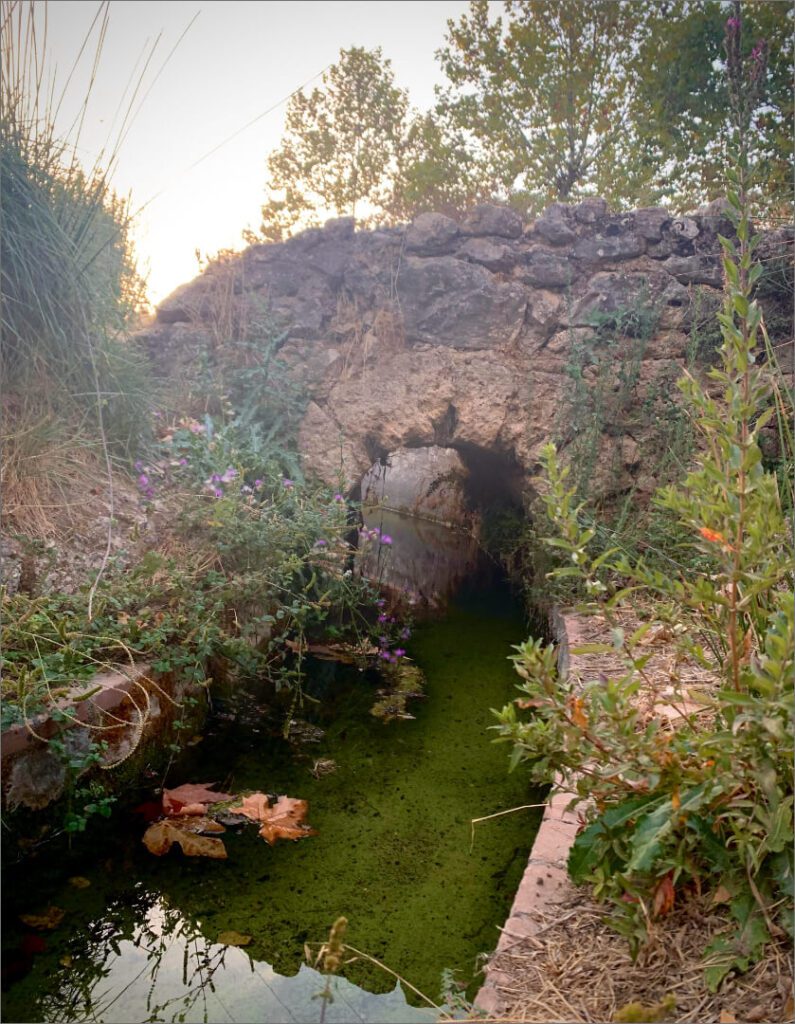
The long irrigation canal called the Acequia de Aynadamar is one of the greatest historical engineering works. It was built at the end of the 11th century to connect the plentiful Fuente Grande spring with the already crowded Albaicín district.
It is now classified as a Bien de Interés Cultural (Asset of Cultural Interest) in the General Catalogue of Andalusian Heritage.
It was used for human consumption and land irrigation. There are several small bridges along the way. Their function is not to allow people to pass across, but to prevent rainwater from destroying the canal. They also ensure that the water does not become cloudy and can be guaranteed to be safe and drinkable.

Puente del Caracolar.
This bridge is built on masonry sills with a brick vault. It takes its name from its proximity to the Caracolar. Around 15 million years ago, the Guadalquivir Basin was occupied by the sea, and there were marine creatures. When these creatures died, they were buried under the materials carried in by the rivers. Due to the tectonic upheavals that formed the Betic Cordilleras, the deposits containing these creatures were displaced and pushed upwards, forming this passage.

Puente de Corvera.
Of identical construction is the Puente de Corvera, it served primarily as a culvert and footbridge for the farmstead, but is now covered over.

Puente de los Arrieros.
Continuing along the course, on the border between Alfacar and Víznar, is the Puente de los Arrieros (Muleteers’ Bridge). Its size and name suggest that it may have linked the network of routes that connected some villages with others, and which in turn connected with the wider routes of the Kingdom of Granada.





